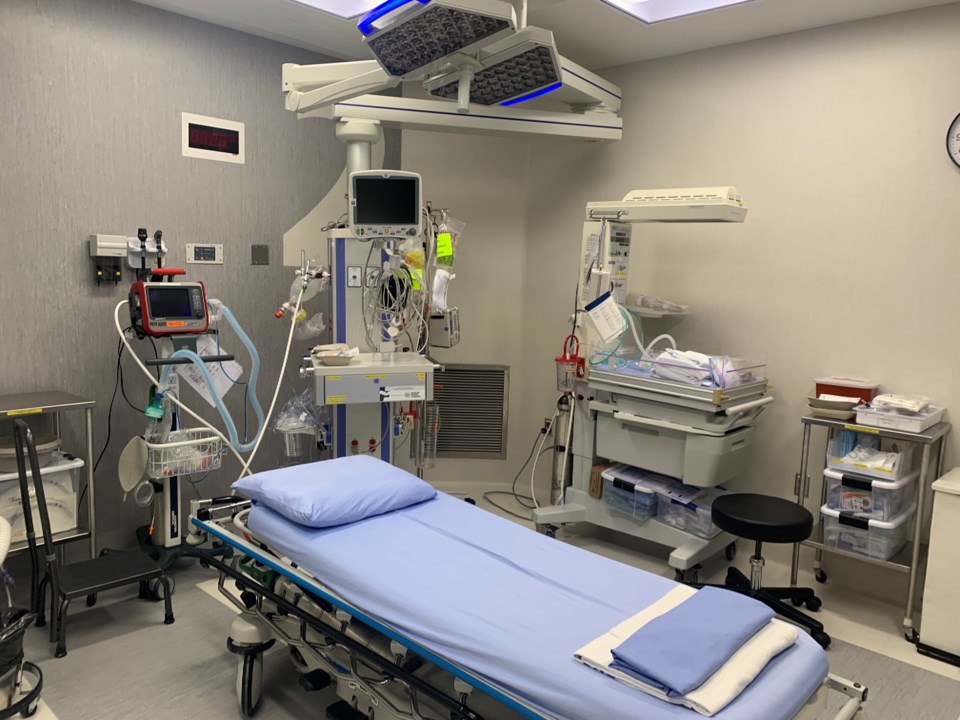Public engagement for a new health-care plan from Vancouver Coastal Health (VCH) shows what residents already know—services are stretched, and residents need more locally accessible infrastructure.
Pemberton, Whistler and Squamish, as well as rural communities outside these towns, on health-care needs in the Sea to Sky. The survey will inform a 30-year master plan and site plans for health-care called Health Vision Sea to Sky.
The planning process started in June 2023 and includes three phases. The first phase, What We Heard, 2023, and seeks to create a “vision for the future of acute, long-term care and community health-care services within the Sea to Sky corridor.”
VCH also released in consultation with local First Nations.
The second and third phases of the study include a draft clinical services plan and draft master site plans for Squamish, Whistler and Pemberton.
The report focused on “critical gaps and challenges around current health services in the Sea to Sky corridor, as well as future priorities and opportunities.”
Gaps in the system
Highlights in health-care gaps and challenges include long wait times for emergency and urgent care, limited access to specialized care and diagnostic imaging, few options for long-term care and insufficient access for primary care.
The only local hospital in the Sea to Sky is Â鶹Éç¹ú²úGeneral Hospital, which isn’t equipped for specialist care. People needing maternity and oncology specialists often travel to Lions Gate Hospital.
Long-term care beds are at capacity, and there aren’t enough options for senior living. Primary care practitioners are either retiring or overwhelmed.
Pemberton Health Centre and Â鶹Éç¹ú²úGeneral Hospital both lack computed tomography (CT) scanners, despite the “considerable” demand.
While the local population of the Sea to Sky has ballooned between 2016 and 2021 another factor straining health-care is tourism, with visitors flocking to the corridor for mountain biking, skiing, hiking and climbing, which “puts additional pressures on local health services,” according to the report.
Finally, a lack of public transport exacerbates the problem when people need to commute to a health centre away from home, and frequent closures of Highway 99 add to the frustrations.
New infrastructure for Sea to Sky?
Heidi Butler is the operations director of community care for VCH, and said information from the report will inform VCH’s vision.
“We’ll probably have Phase 2 and 3 very closely tied together, because when we look at what clinical services we need, we also are looking at what infrastructure will be needed to then support those clinical services,” she said. “So, we’ll probably be combining Phase 2 and 3 together that will start in the fall of this year and carry on and through the winter.”
Butler couldn’t confirm yet what infrastructure will go where, and said the infrastructure plans are recommendations.
“The infrastructure plans are really just to say, what would we recommend to support that level of clinical service over the next 30 years,” she said. “We’ll be talking about what that looks like in the fall of this year.”
Shoring up acute, long-term care and community services will require lots of money, and Butler said VCH will continue to work with the Ministry of Health and other funding partners to strategize implementing the plan.
“It won’t happen overnight, and it’s something that we’re going to have to continue to work to prioritize the areas that are of greatest need and work with our ministry partners and other funding partners to ensure that we can implement the plans,” she said.
While the exact nature of what health-care sites will go where has yet to be revealed, Butler did note a CT scanner is slated for operations at Â鶹Éç¹ú²úGeneral Hospital next year.
Corridor priorities
While the Sea to Sky corridor’s populations and health-care are interconnected, each community has distinct needs. Butler said the vision aims to accurately understand these needs, create site plans for Squamish, Whistler and Pemberton, and find integration.
“So as a part of the planning, there will be three distinct site plans, the one for Squamish, Whistler and Pemberton, as well as an integrated, high-level plan that will speak to how those three sites will integrate together, share services, rely on each other, and then also how the Sea to Sky will also integrate with the North Shore and other areas in Vancouver,” she said.
While there was overarching themes that spanned the length of Sea to Sky communities, the report found each area had somewhat different priorities.
The top three services identified by the public as a local priority were urgent primary care, diagnostic imaging services and mental-health services.
Other desired additions include lab service and physicians for minor or moderate injury care.
Co-location of services was targeted as a potential opportunity for filling these gaps, with respondents pointing to Whistler 360 and The Foundry in Â鶹Éç¹ú²úas successes.
Squamish’s challenges align closely with the corridor’s themes, due to the respondents representing 64 per cent of all those surveyed.
For Whistler residents, specialist care is a challenge, and for Pemberton, long-term care space is more commonly a challenge than other communities.
By gender, men reported needing urgent or emergency care access more commonly than women, and women reported receiving long-term care was a challenge more often than men.
Gender diverse, two-spirit, trans or non-binary respondents noted more commonly than other groups that communications between hospitals and primary care providers is challenging.
Indigenous communities, meanwhile, responded that culturally appropriate care is more commonly a challenge.
While the survey responses skewed heavily towards the District of Squamish, consultation with municipal leaders, town planners and hospital foundations helped ensure Phase 1 heard from stakeholders throughout the corridor, according to Butler.
“I would encourage people to engage in Phase 2,” she said. “If they haven’t had the opportunity to in Phase 1, there’s still opportunity. We really want to hear from people.”
To read the reports or provide feedback, .



